Contents

Photos from left to right: Shady resting spot


The Garden A Place Where Creativity Thrives The Dream of an Oasis Ive always liked to make things with my hands and to create and realize ideas. Learning new skills and new techniques opens new worlds. A good way to try your hand at a new craft is to enroll in a course. Usually, you can learn the basics and maybe even make a unique object over a weekend. You dont need to be an expert. Curiosity and dedication go a long way.
To me, the garden is a place for enjoyment and relaxation, but also a place where my creativity thrives. In a dream garden, the scrubby corner becomes a green oasis. I realized my dream of beautiful white birch bark by making a simple birch sapling screen that brightens the houses north side. See how it turned out on . Inspiration from Many Places Not many garden-people leave unchanged after a visit to lavish private gardens, the species-diverse Kew Gardens, or the mysterious hanging gardens of Ninfa. At places like this, there is always something interesting and useful you can bring to your own garden.
To begin with, a garden needs several different elements to become enjoyable and to function properly. The floor may consist of grass or stone. Hedges and trellises form the walls. The roof is created from pergolas and tree crowns. To name a few projects, you will find in this book how to create personal screens, walkways, and plant supports as well as furniture and decorations. Many of the projects are quick and simple, others are more demandingbut the love for the material is what they all have in common.
The contrast of stained glass and shiny metal against rough concrete and rusty iron is absolutely lovely. In addition to the base elements, its exciting to add eye-catchers that surprise or delight. An eye-catcher is just what it sounds like, something that catches the eye. The books beach stone compass rose and stained glass citrus support are some of the eye-catchers in my garden. If you want to see what these look like, go to pages 127 and 231. The Plants Play the Lead Role Many of my favorite plants are included in the projects planting sketches.
Some of them have been raised from seeds. Some of them were purchased fully grown. Others have come to me in different ways. The plants with a provenance are my beloved ones. Ingbritts bright pink Moving geranium or Olles red Christmas rose reminds of my former neighbors. The plant that holds the closest place to my heart is my grandfathers lilies of the valley.
Grandpa was my best childhood friend. He skied with me through the forest in the winter and made me willow pipes in the spring. When Grandpa turned fifty in 1945, the neighbors congratulated him with a large basket filled with plantsincluding blooming lilies of the valley. It was an amazing gift to get on February 27in the middle of the war and in the middle of the coldest winter. How was it possible? Mom nursed them carefully, and in the spring she planted them in the garden. When I left home, I was given some lilies of the valley to accompany me to the community garden.
Today, nearly seventy years after my grandfathers fiftieth birthday party, the lilies are forming a low green carpet beside the romantic ruins on . I love them and immensely enjoy their small, fragrant flowers. My hope is that this book will give you both inspiration and pleasure, but will also provide clear step-by-step instructions for all kinds projects to adorn your garden. Warmest good luck! Today, nearly seventy years after my grandfathers fiftieth birthday party, the lilies are forming a low green carpet by the romantic ruins on . 
 CHAPTER N 1 BRAIDED WILLOW
CHAPTER N 1 BRAIDED WILLOW  The Docile Willow Braiding willow is something everyone can enjoy. In order to create a beautiful plant support, all you need is a few boughs, pruning shears, and a bit of grip strength.
The Docile Willow Braiding willow is something everyone can enjoy. In order to create a beautiful plant support, all you need is a few boughs, pruning shears, and a bit of grip strength.
Its fascinating to see how the vines can be shaped into fine knots and lovely cable patterns without breaking. The Japanese square knot is beautiful, and it looks difficult to tie; however, once you learn how, its actually quite simple. Find inspiration from the projects in this chapter and let your willow plant support take shape piece by piece. Once you have the required material available, it only takes a few hours to braid a large trellis or a cone. 

 The beautiful moon gate by Christian Erlandsson at Yasuragi Hasseludden in Saltsj-Boo, east of Stockholm. Here, the willow has been braided around a steel frame.
The beautiful moon gate by Christian Erlandsson at Yasuragi Hasseludden in Saltsj-Boo, east of Stockholm. Here, the willow has been braided around a steel frame.
T he willow symbolizes perseverance and patience. According to the Taoist religion, the willow is the opposite of spruce and oak. They resist the storm and break, while the willow bends over, only to rise up again when the storm has subsided. Willow Pieces in the Garden Willow is a natural material that is easy to handle and blends in well with the garden environment. Even in the simplest constructions, willow gives plants great support. The more advanced pieces made of willow are almost their own works of art.
The willow has long and thin shoots that grow 34 m in a summer. They are flexible and pliable, and these unique features make them suitable for braiding. For garden projects, mainly the thin and yellow-green one-year or two-year shoots are used. The two-year shoots are thicker and yellowish-brown colored, and can be used to make fences. Willow and wicker are both available in many colors, including yellow, blue, gray, and red. The shoots suitable for braiding are called wickers or poles and you can use either fresh or dried willow.
Willow is called green when it is fresh, and brown when dried. Pick or Purchase Willow? Fresh willow is available for purchase in the spring or early summer. Willow trees in parks and along avenues are usually pollarded every other year, and you can use the opportunity to collect the trimmed shoots. Some garden organizations arrange willow harvest days during the spring. There, you get to pick willow at farms that grow Salix as an energy crop. If you dont have the opportunity to harvest, you can simply purchase willow.
Many growers sell Salix for gardening. Freshly harvested willow can be used for a few weeks after it has been cut. Keep it slightly moist and store in the shade. It will retain the moisture longer if it is wrapped in a tarp. Growers keep willow refrigerated, which makes it possible to store it for longer, and they can sell fresh willow throughout the summer. Dried willow can be purchased throughout the year from places that host willow braiding courses.

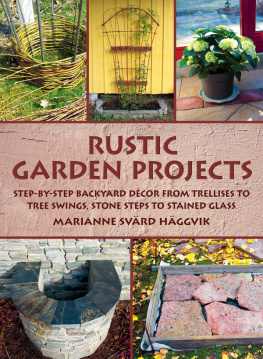
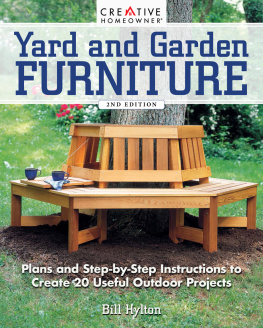

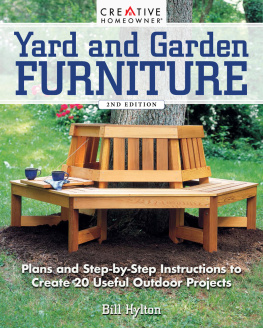

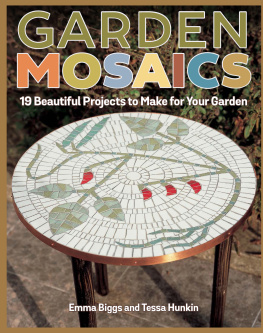

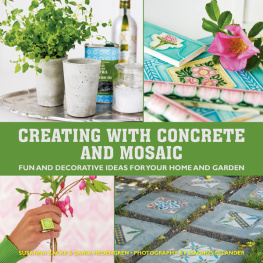



 Photos from left to right: Shady resting spot
Photos from left to right: Shady resting spot 
 The Garden A Place Where Creativity Thrives The Dream of an Oasis Ive always liked to make things with my hands and to create and realize ideas. Learning new skills and new techniques opens new worlds. A good way to try your hand at a new craft is to enroll in a course. Usually, you can learn the basics and maybe even make a unique object over a weekend. You dont need to be an expert. Curiosity and dedication go a long way.
The Garden A Place Where Creativity Thrives The Dream of an Oasis Ive always liked to make things with my hands and to create and realize ideas. Learning new skills and new techniques opens new worlds. A good way to try your hand at a new craft is to enroll in a course. Usually, you can learn the basics and maybe even make a unique object over a weekend. You dont need to be an expert. Curiosity and dedication go a long way. 
 CHAPTER N 1 BRAIDED WILLOW
CHAPTER N 1 BRAIDED WILLOW  The Docile Willow Braiding willow is something everyone can enjoy. In order to create a beautiful plant support, all you need is a few boughs, pruning shears, and a bit of grip strength.
The Docile Willow Braiding willow is something everyone can enjoy. In order to create a beautiful plant support, all you need is a few boughs, pruning shears, and a bit of grip strength.

 The beautiful moon gate by Christian Erlandsson at Yasuragi Hasseludden in Saltsj-Boo, east of Stockholm. Here, the willow has been braided around a steel frame.
The beautiful moon gate by Christian Erlandsson at Yasuragi Hasseludden in Saltsj-Boo, east of Stockholm. Here, the willow has been braided around a steel frame.